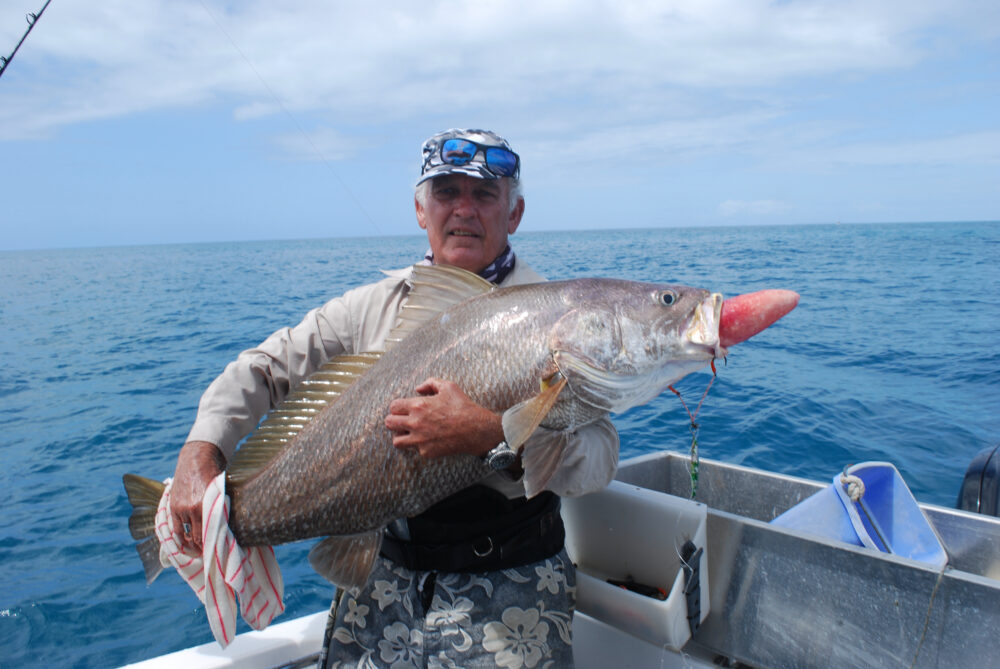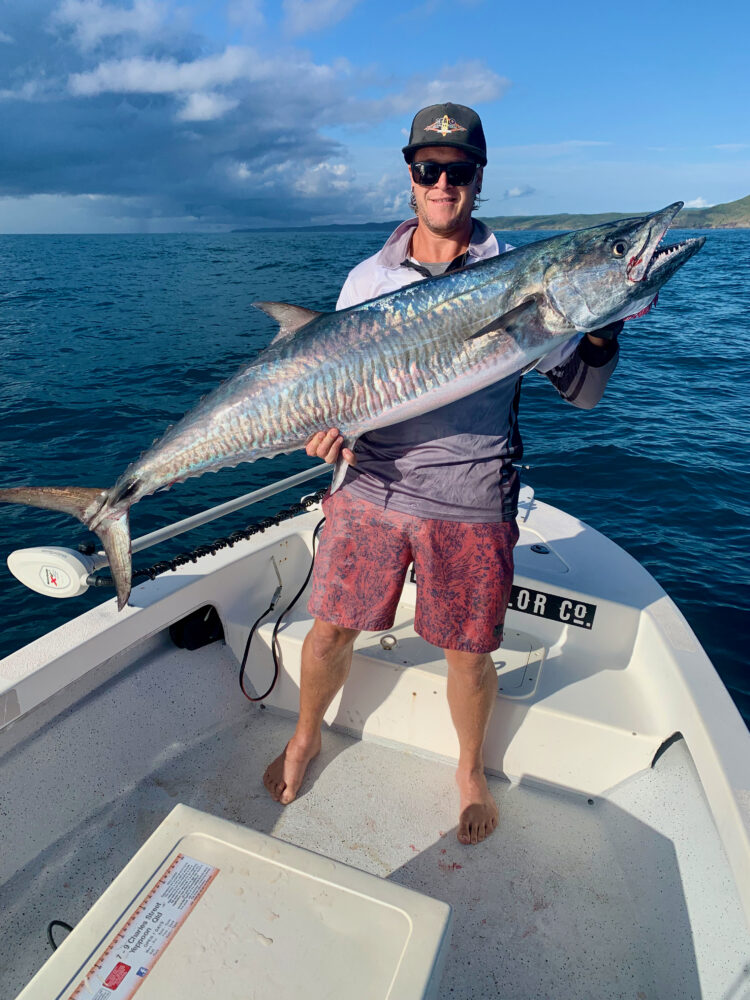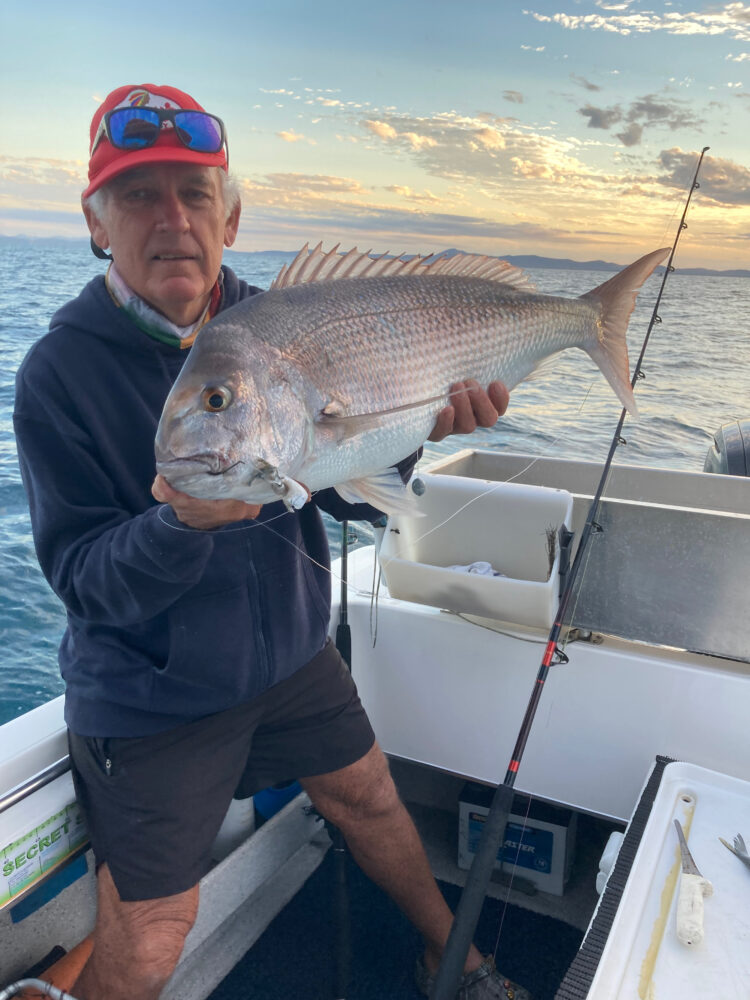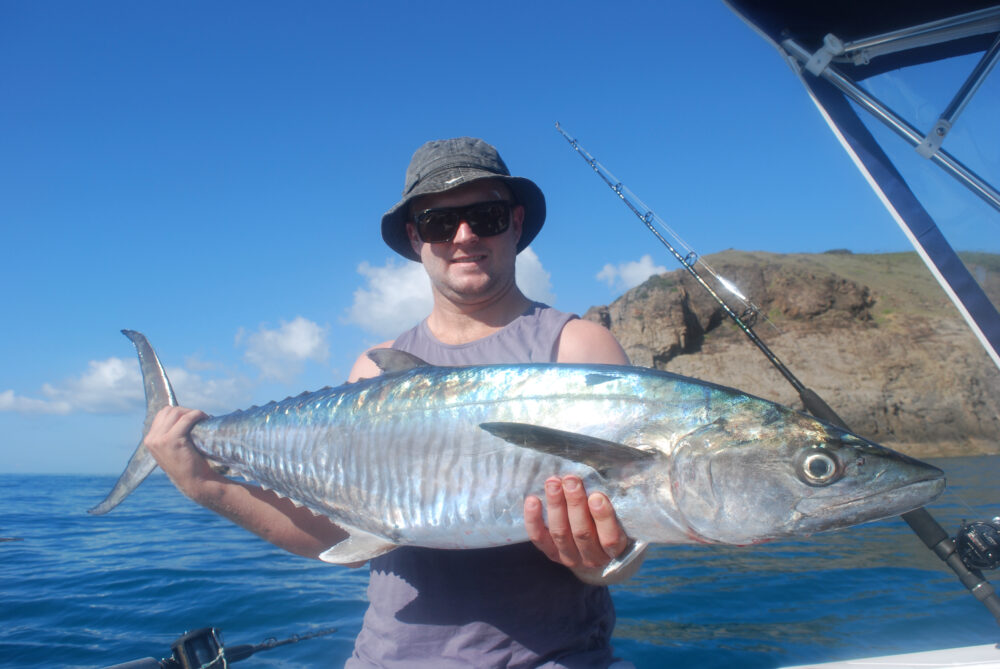Effort Shift – the Impact – By Bill Bowtell
Queensland fishers, both recreational and commercial, have just experienced the first of the management changes for the east coast Spanish mackerel. These initial changes were a northern spawning closure above the 22*S line of latitude, from the 22nd October 2022 to the 12th November 2022 followed by a further three week closure in the same waters from the 21st November 2022 to the 12th December 2022. A similar southern closure below the 22*S line of latitude occurred from the 1st February 2023 to the 21st February 2023 and again from 1st March to 21st March 2023.
These changes, implemented to protect the fish during spawning and dispersal after the announcement by Fisheries Queensland that the east coast Spanish mackerel stocks could be as low as 17% of original spawning biomass, are part of a suite of regulated changes which will come into effect on 1st July ofthis year. They include:
- Recreational possession limit will change to one fish per person and two fish per boat with two, or more, fishers on board.
- Extended charter trip limit will be removed. Fishers will be allowed one fish per person. There will be no boat limit.
- The Total Allowable Commercial Catch (TACC) will be adjusted to 165 tonnes for the 2023 fishing season (which runs from 1st July 2023 to 30th June 2024.

This big black jew had it’s swim bladder deflated and was released. Overfishing of these stocks have seen TAC’s put in place with closures applied when this quota has been reached.
Even without the full suite of proposed management changes in place, recreational fishers are already considering the consequences of these management actions. Especially in relation to catching a feed of fish, the overall fishing experience and the impacts on other fisheries considering the reduced in-possession numbers. These are all valid concerns for the Spanish mackerel fishery is a rather unique offshore fishery, which draws a real parallel in fishery status to the inshore barramundi. Many fishers target these iconic fish almost exclusively.
One of the major concerns of recreational fishers, which is also expressed by those commercial fishers who currently hold an SM (Spanish mackerel) symbol on their RQ (Reef Line Fishery) symbol attached to the commercial licence to access the fishery, is effort shift, or effort creep within the fishery. And this concern is very real.
Regular readers of Fish and Boat may be aware of my affection and regard for the Spanish mackerel and love of the environment in which they live. For 50 years I have targeted these fish, almost exclusively, in offshore waters and locations. They are hard fighting, handsome and provide a good fillet recovery which tastes very well on the plate. In my world of fishing there is little need to look further and target other species, except for the occasional change of diet. This is about to change.

Mitch Nash of Yeppoon a regular Spanish fisher with a nice fish. No need to even consider upgrading in this case.
Recently I put the concerns of, “effort shift” and “for a feed” to the test. The results were what I expected and showed that more thought is required when setting bag limits and in-possession limits for the recreational fisher if effort shift is to be controlled whilst still meeting the expectation of catching a feed. If this is to be done successfully then consideration must be given to, “looking at the fishery in a holistic way”, setting in-possession limits that combine fisheries (eg Spanish mackerel AND reef line) whilst still providing for a feed of fish within the overall fishing experience. To labour this point of view.
There is an army of dedicated recreational fishers who almost exclusively target the Spanish mackerel. There is also an army of recreational fishers who occasionally catch a Spanish mackerel whilst they are out in the same waters and locations targeting reef finfish (be it Coral Reef – northern, or Rocky Reef – southern) . For those fishers who target Spanish mackerel, the reduced possession limit means a 67% reduction in their available catch. There are two options for these fishers: one, supplement this loss by trying to upgrade the catch to a larger fish. This will result in wastage. The second, shift the effort to other fisheries. Spanish mackerel are an offshore fish so this shift in effort would more than likely be in either the Coral Reef finfish fishery, or the Rocky Reef fishery.

Pink snapper will become a target species for mackerel fishers during the cooler months of Winter. Closed seasons also apply to this specie.
This shift in effort is real. My test during the first week after the February southern closure saw me target Spanish mackerel just on dawn at Conical Island, one of the northern islands of the Keppel Group. I took an 8kg fish after only 5 minutes of trolling. Under normal circumstances I would have stayed and tried for another fish of the same size, or one a little larger. If there was a need for more fish I would have tried for my possession limit of three. Normally I am satisfied with two. I then go for a swim, or a dive before heading back to the harbour. However, as this was a test, and considering the new changes about to be implemented, I packed up and headed 40km further offshore to a reef that had regular reef fishers already fishing. After two hours and a couple of further moves I had my bag limit of large mouth nannygai (Saddle Tail Snapper). So headed back in.
Assessing my take for the day I had a good catch. I also had a good fishing experience. There were 10 fish in total, 9 of which (the nannygai) I would not normally target, tending more to remain on the mackerel grounds chasing the Spaniard. As a mackerel fisherman this need to target other species (in my patch here on the Capricorn Coast this will be Coral Reef finfish) to supplement my catch will become a normal day’s fishing trip. This will put pressure on other fish species in other fisheries.
Currently there is a combined possession limit in the Coral Reef Finfish Fishery for recreational fishers. A holistic perspective on this type of management action would be to include Spanish mackerel in this combine catch. By doing this, adjustments could be made within the overall harvest strategy of both Spanish mackerel and reef line (include Rocky reef) finfish that recognizes the uniqueness of the Spanish mackerel whilst still protecting it, and other fish species.

Cam Smith with a fat, well-conditioned Spanish mackerel. This fish will provide succulent fish dinners.
A further consideration in this effort shift discussion could include reducing the severity of the 67% reduction for the regular, dedicated, recreational Spanish mackerel fisher by incorporating a two fish per person and four fish per boat (for two or more fishers) possession limit within a combined REDUCED possession limit of reef finfish, or other species according to location.
History within the management of Queensland’s fisheries, both offshore and inshore, is littered with broken fisheries due to overfishing and effort shift and effort creep. Past management regimes managed the State’s fisheries by the “Single Bottom Line” – the almighty dollar $$$$. It was advocated, “the higher the value of the fishery, the better it was being managed”. In reality, and as the present situation indicates, nothing is further from the truth. Effort shift saw the fishery suffer. So were those who depended on it for their livelihood, their recreation, for a feed, and those who continue their lifestyle and culture.
Today, with the “Sustainable Fisheries Strategy” and its accompanying document, “Queensland Harvest Strategy Policy” managers have a clear mandate to manage the State’s fisheries by the Triple Bottom Line – Social, Financial and Environmental. This alone points to a holistic approach in management.
Fishing is more than catching fish; it is a lifestyle whether one is commercial, or recreational. Effort shift is real. It can be friend, or foe. Think about it!





